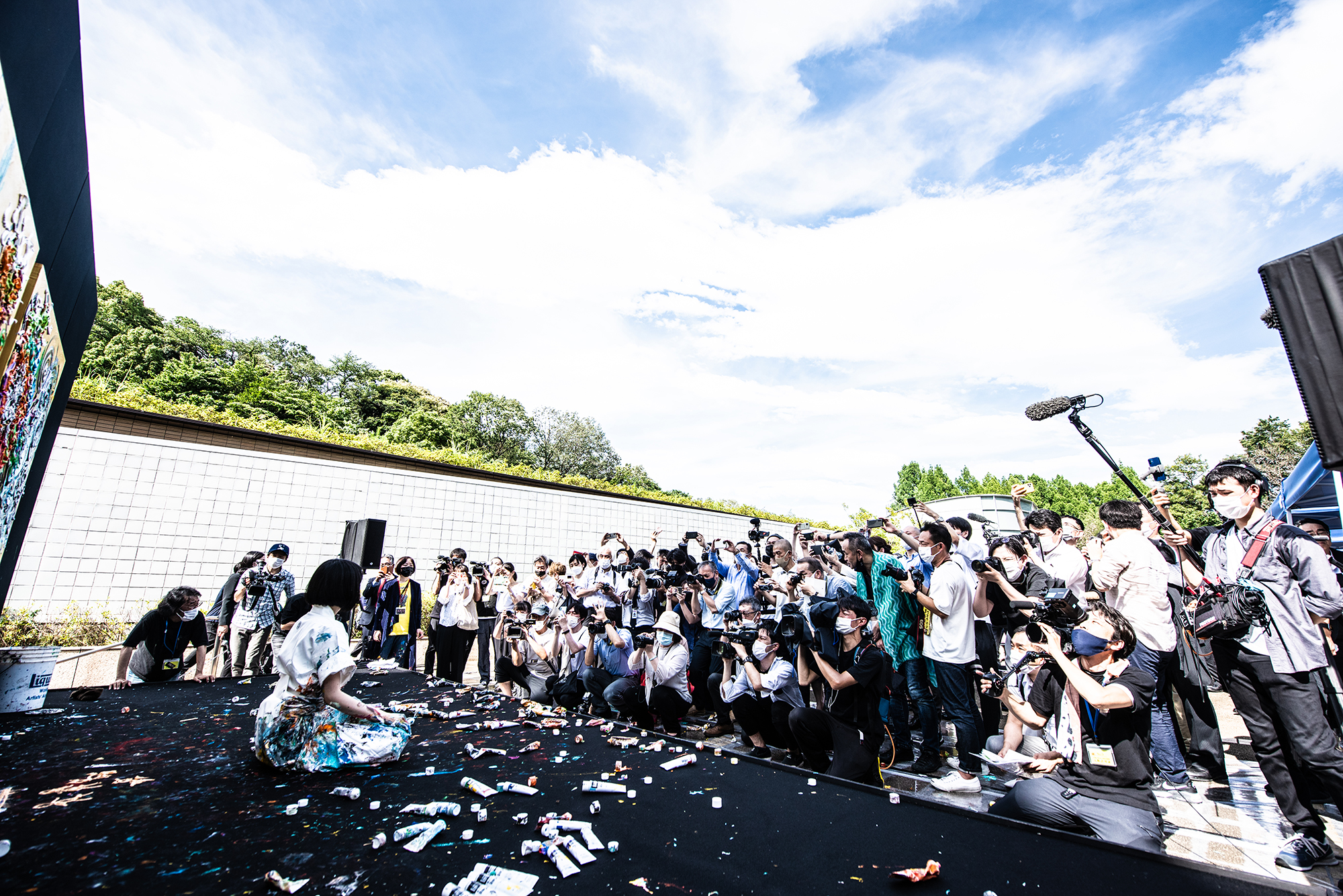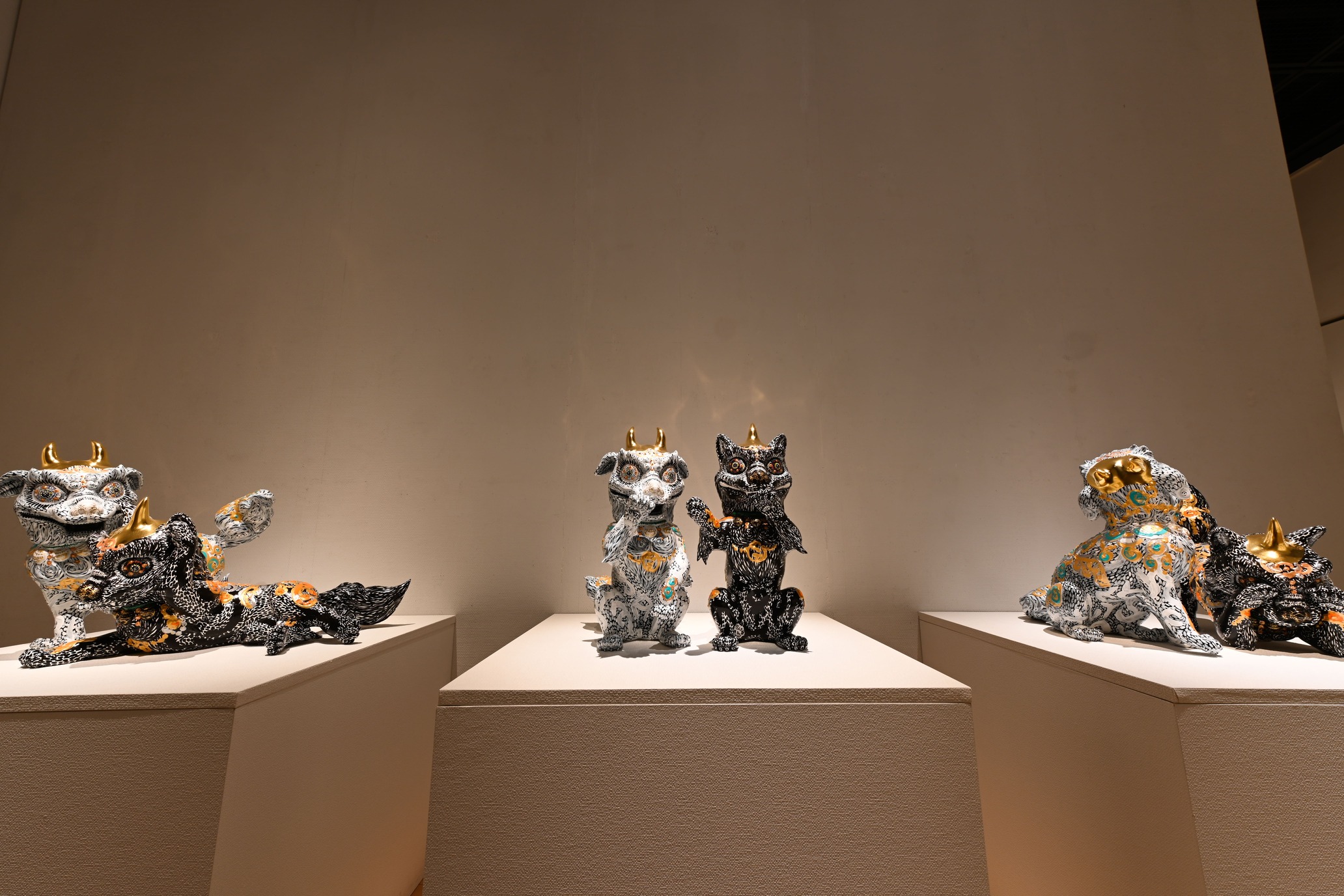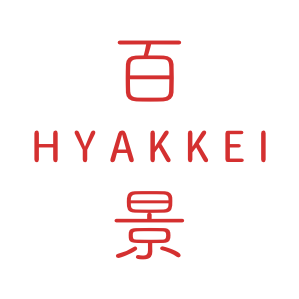A challenge to Taro Okamoto, and harmonization. Miraculous live painting that overwhelmed the audience with tremendous energy.

On June 24, the day before the first day of the exhibition of Miwa Komatsu, the live painting venue was filled with a large number of press and related parties, and was enveloped in an unusual sense of tension and elation. Under the scorching sun, “Mother’s Tower” by Taro Okamoto soared high. The live painting area was set up in front of the tower.
The moment Miwa Komatsu appeared and prayed, the venue was transformed into a place of tremendous energy, and everyone present was convinced of a miraculous moment. More powerfully than ever before, the artist depicted motifs that had never been seen in Komatsu’s works before.
It was truly the embodiment of the primitive power that Okamoto relied on for his expression, and the moment when the energies of Taro Okamoto and Miwa Komatsu fused together. A new work of art = the birth of life. Under the scorching sun, “Mother’s Tower” seemed to be celebrating, rejoicing, and dancing to the moment of the birth of this work.
The meaning of challenge found in Taro Okamoto's enormous energy. "It was not a confrontation, but a harmonization, a mixture."

When Komatsu finished her live painting, she didn’t remember much while she was painting.
Miwa Komatsu – “When I thought back on it calmly, I was painting live in front of a work by Taro Okamoto, whose energy is extremely strong, and I was overwhelmed, but I managed to paint while standing still.
Of course, I put my appreciation for Taro Okamoto, the energy of the place, and many other things. I also prayed that as many people’s hearts and souls as possible would be saved.I felt that this was not only an opportunity that I wanted, but also one that Taro Okamoto wanted, and I felt that I was creating the work with a very warm feeling.”

In this live painting session, many motifs not seen in her previous works were seen, and we sensed tremendous energy even more than usual.We asked her about the feeling at this time.
Miwa Komatsu – “I felt really dizzy. I wondered if I could stand up and draw. That’s how much energy Taro Okamoto has.I finally understood the meaning of the subtitle “challenge”. Rather than a confrontation, it was more like a “harmonization” or a “mixture”.
I got into the primitive flow more and more, and from there, for example, I made it in an abstract shape or mixed elements. I drew it with that feeling.”
It was truly a miraculous live painting, in which Miwa Komatsu captured the presence of Taro Okamoto in the psychic and unconscious realms, fused them together, and brought them into fruition.
Artist Miwa Komatsu's "Soul Journey" traced in five chapters - Transparent Chaos : Spirituality and Mandala -

The exhibition consists of five chapters, tracing the history of artist Miwa Komatsu up to the present.
In particular, the section from the colorless world of copperplate prints in chapter 1 to the acquisition of color in chapter 2 is a must-see.This is a new world of expression that an artist has discovered after suffering and breaking her limits. You will feel as if you are witnessing her heartache and joy.Since then, Miwa Komatsu has spread her wings as a world-class contemporary artist. This exhibition traces her history.
Exhibition Contents
Chapter 1: Encountering Line Drawing: Death, Self- Portraits, Eroticism
Chapter 2: Acquisition of Color: Encounter with the Great “Eyes”
Chapter 3: The “Third Eye” Opened: The Rhythm of Existence
Chapter 4: Spirituality and Mandala: The Cosmology of the Great Harmonization
Chapter 5: Myths in the Future Tense: Adventures in Abstraction and Symbolism

The exhibition features paintings of sacred beasts, symbols of prayer, which are representative works by Miwa Komatsu.

Many three-dimensional works of "Komainu" are also on display.

Legends in Future Tense (2022)
"The Great Harmonization - Next Mandala" created to commemorate the 1200th anniversary of the founding of the Rikkyo sect of Shingon Buddhism.

"The Great Harmonization - Next Mandala" (2022) Yin-Yang, Black and White

"The Great Harmonization - Next Mandala" (2022) Rainbow, Color
The highlight of the exhibition is the main exhibit, “The Great Harmonization – Next Mandala. This gigantic work, measuring approximately 4 meters in length and width, is composed of a pair of mandalas, one for the “Yin-Yang, Black and White” and the other for the “Rainbow, Color”.
“The Great Harmonization – Next Mandala” was created as a dedication to Toji Temple, the head temple of the Shingon sect of Buddhism, to commemorate the 1200th anniversary of the founding of the Rikkyo sect of Buddhism.
This work will be dedicated to Toji Temple next year. The pair of mandalas displayed facing each other in a large space evoke in the viewer’s mind a deep sense of awe and prayer for the universe.

Taro Okamoto's "Chaos (1962)" and obsidian in the shape of DNA
Everything in the “Chapter 4” exhibition space is a highlight.
One of them is Taro Okamoto’s sculpture “Chaos (1962),” which is placed in the center of the exhibition space, surrounded by obsidian in the shape of DNA.Komatsu describes the work as follows.
Miwa Komatsu – “I asked the Obsidian Experience Museum in Nagawa-Town (Nagano Prefecture) to help me find a piece of obsidian about the size of a skull, and they were able to find it. I used it to create a DNA shape.
Taro Okamoto’s body may have perished, but the museum is filled with the lingering scent of his thoughts and energy.
I inhaled this energy and moved forward with it… I created a spiral that represents a great harmonization and connection between the two ardent human beings.I broke the obsidian that I received into two pieces and placed a pair of them there that had been one.
Of course, you all know that obsidian is very much related to the Jomon culture, and you also know that Taro Okamoto is also very closely related to the Jomon culture.It is with respect for the Jomon period that I have placed my work in the center of this exhibition.”
Taro Okamoto’s permanent exhibition and Miwa Komatsu’s exhibition, two souls deeply connected.We hope you will experience the power of this work, which has a brilliant storyline and theme, as if the entire exhibition space were a work of art.

Area21-Whole Earth(2022)

The entrance to the Taro Okamoto Museum of Art. Taro Okamoto's statue is surrounded by Miwa Komatsu's Divine Spirits
The Miwa Komatsu Exhibition opened with a stunning live painting.Even at the entrance, visitors are greeted by a brilliant display that evokes a sense of harmonization with Taro Okamoto.
We felt a sense of respect not only for the power of Miwa Komatsu and Taro Okamoto as artists, but also for the staff and team who made this project possible and allowed us to experience this moment.
“Art is medicine for the soul,” says Miwa Komatsu. She is a rare artist who never turns her eyes away from the modern world and delivers prayers and messages.
We are convinced once again that the energy her art releases will save and liberate the hearts of millions of people. We hope many people will take this opportunity to experience it.
Miwa Komatsu Exhibition
– Transparent Chaos : Spirituality and Mandala –
period: June 25- August 28, 2022
place: Taro Okamoto Museum of Art, Kawasaki
> Miwa Komatsu official site
> Taro Okamoto Museum of Art






















































